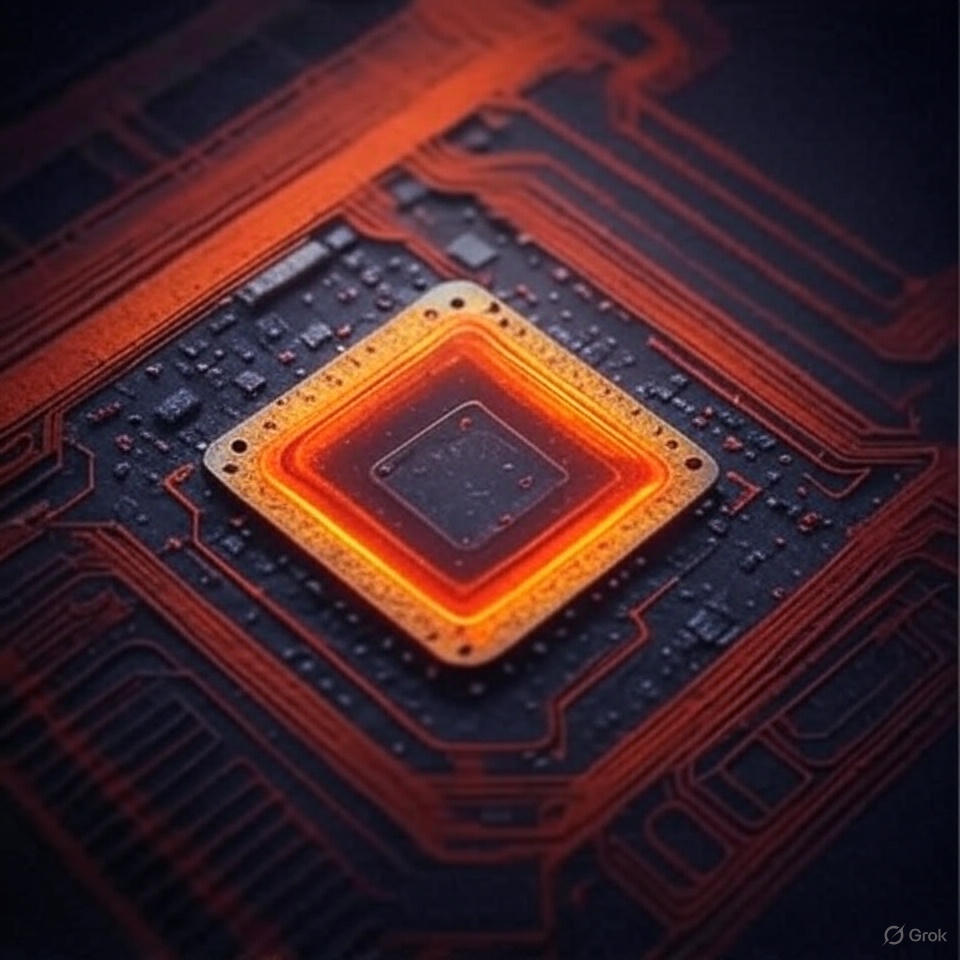Advanced heat dissipation techniques in Printed Circuit Board (PCB) manufacturing are crucial for managing the excessive heat generated by modern, high-power, and compact electronic devices. These methods focus on enhancing heat transfer away from hot components using specialized design features, materials, and mechanical additions.
Internal PCB Design Techniques
These techniques use the PCB structure itself to improve thermal conductivity and spread heat:
- Thermal Via Arrays: Thermal vias are small, plated through-holes (typically between $0.2 \text{ mm}$ and $0.5 \text{ mm}$ in diameter) placed directly beneath high-power components (like ICs and power transistors). They provide a low-resistance path for heat to transfer vertically from the top layer to the inner copper planes or a bottom-side heat sink. For maximum efficiency, vias are often filled and capped with a thermally conductive material (like copper or specialized epoxy) to ensure a flat soldering surface and prevent solder wicking.
- Thick Copper Layers and Planes: Using heavy copper thickness instead of the standard for the trace width and internal power/ground planes drastically improves both the electrical and thermal conductivity of the board. Large, continuous copper planes act as efficient heat spreaders, distributing heat laterally across a wider area to prevent localized hotspots.
- Optimal Component Placement: Strategically arranging heat-generating components (like CPUs, power regulators) near the center of the board or near the edges (for convection cooling) helps to distribute heat more evenly and reduces thermal coupling with heat-sensitive components.

Specialized Materials and Substrates
These methods involve incorporating highly conductive materials into the PCB construction:
- Metal Core PCBs (MCPCB): Also known as Insulated Metallic Substrates (IMS), these boards replace the standard FR-4 dielectric with a metal base (typically aluminum or copper) and a thin, highly thermally conductive dielectric layer. This construction provides an extremely efficient path for heat to be transferred from components directly to the metal core for dissipation.
- Copper Coin Technology: This involves embedding thick, high-purity copper blocks (often shaped like a coin or pillar) directly into the PCB structure, usually under a high-power component. These copper inserts act as a direct heat bridge, reducing the thermal resistance from the component’s thermal pad to an external heat sink or the metal core.
- High-Performance Laminates: Using specialized dielectric materials that have a higher thermal conductivity than standard FR-4 allows the board itself to move heat more efficiently.
External and Active Cooling Solutions
These involve mechanical or active systems attached to the PCB:
- Heat Sinks and Thermal Pads: Heat sinks (made of aluminum or copper) are passively attached to the top of high-power components. They increase the surface area available for convection and radiation, dissipating heat into the ambient air. Thermal Interface Materials (TIMs) like thermal pads or paste are used to fill microscopic air gaps between the component and the heat sink, ensuring maximum heat transfer.
- Heat Pipes: These are passive, sealed devices that use a working fluid to transfer heat via a phase change (evaporation and condensation). They are extremely effective at moving large amounts of heat rapidly from a hot spot to a remote area (like a dedicated heat sink or system chassis) where it can be dissipated.
- Active Cooling: For the highest power applications, active cooling methods are necessary. This includes the use of cooling fans (forced-air convection), liquid cooling systems (circulating coolant through cold plates), or Thermoelectric Coolers (TECs), which use the Peltier effect to actively pump heat away from a component for precise temperature control.